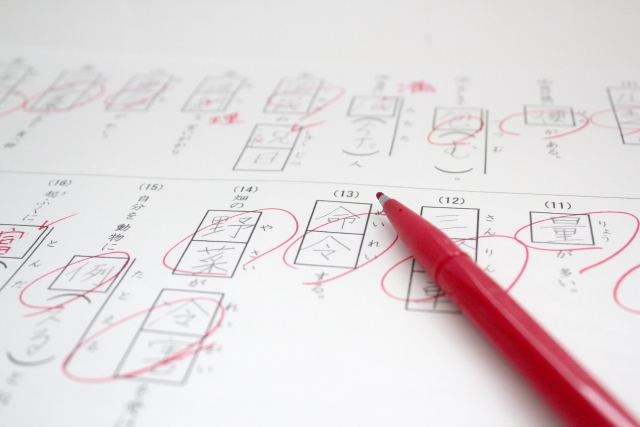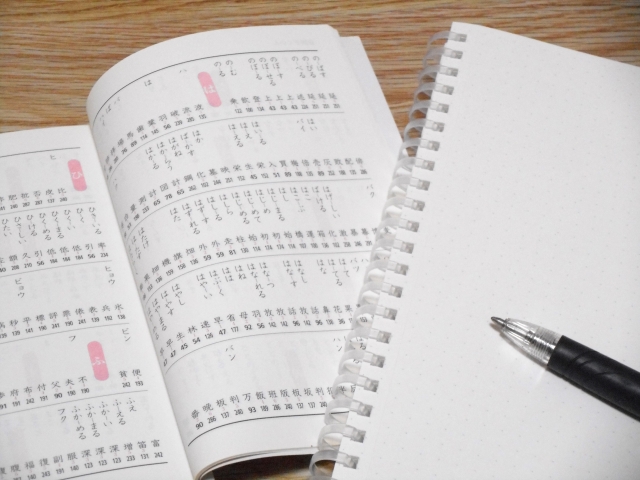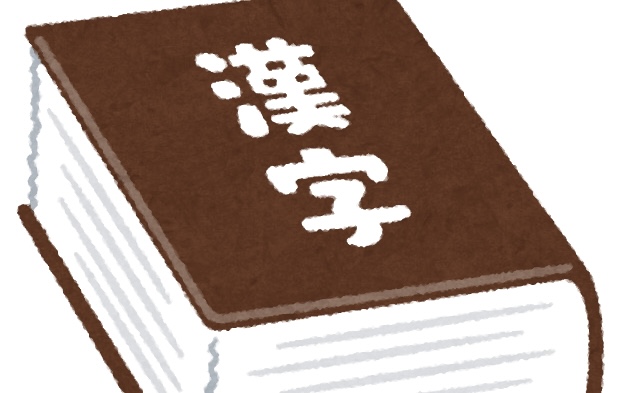The English translation is below
日本語を学んでいる外国人の方達にとって、漢字を覚えるのは
大変だ〜という話はよく聞きます
でも私を含めて、大抵の日本人も漢字の学習が好きではなかったと思います
中には『漢字検定』の1級や準1級合格を目指している漢字好きな人も
いますが、ほとんどは受験が終わったら勉強をやめてしまいます
やっぱりこれは、学生時代にずっと強制させられてきたからだと
思うんですよね。。。
日本人である自分がどうやって漢字を習得してきたのか、それについて思う事を
今日は書いてみたいと思います

常陽漢字2136字を覚えて使いこなすために、小学校に入ってからは
『漢字ドリル』などのたくさんの宿題をこなし、大なり小なり
数えきれない程のテストを受けてきました。
楽しかったのは最初だけですよ。「山」とか「川」とか
上手く書けただけで褒められたあの頃…
漢字の構成要素である「へん」や「つくり」なども学んでいきますし
「毛筆」の授業もあったりして、書き順に気を配ったりします
でもねえ、学年が上がるにつれてどんどん画数も増えていくんで
そんなこといちいち気にしてられんのですよ
「にんべん」だの「くさかんむり」だの意識するより
正解の形をコピーしてるだけというか
書き順も 上から下へ 左から右へ は基本的に守りますが
完成された字が合ってりゃオッケーですよ
漢字は入試でも必須なので、いい点をとりたければ、
志望校に合格したければ、覚えるしかないんです

日本に住んでいれば毎日漢字は目にする上に、12年に及ぶ学習で
結果的にというか、当然というか、漢字は身につきました
でももう漢字練習帳を開くことはありません
気が向いたら、たまに分からない漢字を調べることはありますけど…
だから今は、読めるけど書けない漢字なんていっぱいありますよ!
手書きが激減した今では、変換したとき正しい漢字を選べれば
問題ないですからねぇ

日本人にとって漢字習得は、例えるなら、降りることの許されない
自転車にのって、ひたすら前だけ見てペダルを漕いできた感じです
出来て損はないけど、実際役に立ってるけど
強制されたものは好きにはなれなかった…
学習者の皆さんには、ジョギングなりランニングなり
快適なペースで、景色を見ながら進んでいって欲しいですね
語学学習は、過程も楽しんでナンボだと思いますから
I often hear from people learning Japanese that memorizing kanji can be quite a challenge.
But I think most Japanese people — myself included — never really enjoyed studying kanji.
There are, of course, some enthusiasts who aim to pass the highest levels of the Kanji Kentei (the Japanese Kanji Aptitude Test),
but for the majority of us, once the entrance exams are over, we simply stop studying them.
I suppose that’s because we were forced to study them throughout our school years.
As a native Japanese speaker, I’d like to reflect on how I myself learned kanji, and share some thoughts on that today.
In Japan, we’re expected to learn and master 2,136 jōyō kanji — the standard characters used in everyday life.
From the time we enter elementary school, we complete countless assignments like kanji workbooks and take an endless number of tests, big and small.
It was only fun at the very beginning, though — back when writing “山” (mountain) or “川” (river) neatly was enough to earn praise from the teacher.
We also learn about the building blocks of kanji, such as hen (radicals on the left) and tsukuri (components on the right),
and even practice shūji (brush writing) in calligraphy classes, paying close attention to the proper stroke order.
But as we moved up through the grades, the characters got more and more complicated,
and honestly, we didn’t have the time or patience to care about every little detail.
Instead of paying attention to things like ninben (the “person” radical) or kusakanmuri (the “grass” radical),
we just focused on copying the correct shape.
As long as we followed the basic rule — top to bottom, left to right — and the finished character looked right, that was good enough.
Since kanji are an essential part of entrance exams, if you wanted to get good scores or get into your school of choice,
you simply had no choice but to memorize them
Living in Japan, we see kanji every single day,
and after twelve years of schooling, we eventually — and perhaps inevitably — became proficient in them.
But I no longer open kanji practice books.
Once in a while, I might look up a character I’ve forgotten, if I happen to come across one.
So these days, there are plenty of kanji I can read but can’t write.
Now that handwriting has become so rare, as long as I can choose the correct character when typing,
that’s really all that matters.
For Japanese people, learning kanji is a bit like riding a bicycle that you’re not allowed to get off —
pedaling straight ahead, eyes fixed on the path in front of you.
It’s certainly useful, and it doesn’t hurt to know it,
but something forced like that is hard to ever truly enjoy.
I hope that language learners can take a more comfortable approach,
jogging or running at a pace that suits them, enjoying the scenery along the way.
After all, the joy of learning a language comes not just from the results, but from the process itself.


